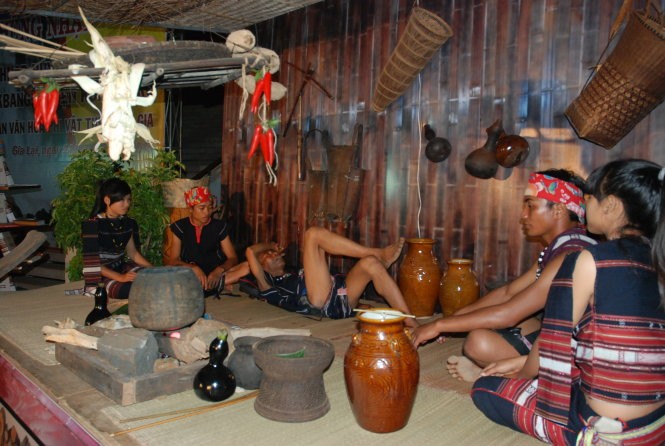(VOVWORLD) - The Ba Na culture includes diverse art forms, epics being one of the most notable. Epics connect the community, the living and the dead, the past and present, speak of people’s hopes for a happy and prosperous life, and praise love, nobility, wisdom, and courage in harmonizing with nature and combating evil.
 Artisan Đinh Blơnh (Kông Chro district, Gia Lai province) recited Dam Noi epic at the ceremony to acknowledged Ba Na epics as a national intangible heritage Artisan Đinh Blơnh (Kông Chro district, Gia Lai province) recited Dam Noi epic at the ceremony to acknowledged Ba Na epics as a national intangible heritage
|
Like the epics of other ethnic groups in the Central Highlands, Ba Na epics are sung or recited poems about life.
The first Ba Na epic was discovered in 1980. Professor To Ngoc Thanh, Chairman of the Vietnam Folklore Arts Association, said: “Before Ba Na epics became unfolded, we knew the plots of a few epics which people recounted as legends, but not as poems. The first Ba Na epic we discovered was Dam Noi, about a young man named Dam.”
Professor Thanh said Ba Na epics reflect the life of the Ba Na and their fight for survival and explain natural and social phenomena such as the origins of heaven, earth, and humans, struggles between tribes, and the causes of good and evil. An epic is often about a hero, his family, his work, and his fight to protect his tribe. Professor Thanh again: “The epics featured fights against evil and evasions to protect the village and ensure peace and prosperity.”
A Ba Na epic has many parts. Each one uses metaphors and imaginative language to talk about human feeling. Reciters sing or recite epics in a way that reflects their understanding and creativity. Doctor Le Thuy Ly of the Institute of Cultural Studies says that to the original plot and language the reciters often add new details to enliven the performance.
They often recite epics at community events such as weddings, funerals and exhumation ceremonies. Professor To Ngoc Thanh: “The reciters don’t have to perform, just sing from a dark corner of the community house. They believe that when they sing the epics, people from the past will appear, although not necessarily to physical eyes. The reciter can sit, lie, or stand while singing. His voice echoes from the darkness as it from the past and the listeners imagination of the characters is freed.”
It often takes three nights to tell an epic. The Ba Na believe that their ancestors will return from the past to meet each other and their children and they must tell an epic from the beginning to the end.
In modern life, epics exist as a form of entertainment, a way to nurture people’s sentiments and pride in their group, and something that fosters community cohesion. In April, 2017, the Ministry of Culture, Sports, and Tourism acknowledged Ba Na epics as a national intangible heritage.